Attack of The Clones
Citrus crops have been with us for a very long time. No one knows for sure how long ago citrus began to be collected and cultivated in it's native range, Southeast Asia, but by the fourth century B.C. it had made its way to ancient Greece, where it was mentioned as a wedding gift of the gods. As any visit to a good-sized grocery store will tell you, there are a stunning array of citrus fruits out there: orange, lemons, limes, grapefruit, pummelos, mandarins,tangerines, tangelos, etc. There are even different cultivars of each of these, making for what seems like an amazing range of cultivated diversity.
Things are not entirely how they seem, though. First of all, there is a tendency to think of each of the different fruits as a different species, and taxonomists have been nice enough to oblige us with species names for each. Taxonomists are in the unenviable position of trying to impose simple distinctions on a system which is neither simple nor distinct, and in this case they create the illusion of many different species, where, in fact, there are basically only four which account for everything you'll ever see in the grocery store: the pummelo, mandarin, citron, and lime. Virtually all the rest are hybrids between these four, some of ancient, probably natural, origin, and some more recent. Here are a few common hybrids:
Lemon = (Lime x Citron)
Sweet Orange = (Pummelo x Mandarin)
Grapefruit = (Sweet Orange x Pummelo)
Tangelo = (Grapefruit x Mandarin)
Temple Orange = (Mandarin x Sweet Orange)
Tahiti Lime = (either Lime x Citron or Lime x Lemon)
Chinese Lemon = (Mandarin x Lime)
You might think that all this intercrossing would quickly result in a wide spectrum of different citrus fruits, rather than these few categories, and you'd probably be right, except for one weird quirk of citrus: it virtually never forms hybrids. Most of these species produce seeds which are what is called "nucellar", which means that rather than hybrid plants, the seeds produce clones of the female (sometimes many, many clones per seed...they're polyembryonic, too). These hybrids are the very rare exception, not the rule.
If you can't make new hybrids, generating new cultivars becomes very, very difficult. All you get is copies of the original. So virtually all new cultivars are the product of mutations.
Take grapefruit, for example: All grapefruits, everywhere, it is thought, come from a single hybridization between sweet orange (Citrus sinensis) and pummelo (Citrus grandis) in Barbados, some time around 1750. Every cultivar, from 'Ruby Red' to 'Marsh' to 'Thompson', is essentially the same genotype, and in fact are basically indistinguishable at the genetic level. When hybrids are made, they suffer so badly from inbreeding depression (after all, a cross between grapefruit cultivars is essentially a selfing) that the plants rarely survive long.
So breeding citrus has become a crazy mix of induced mutations, protoplast fusion, and embryo rescue. Anything to introduce a little genetic variation. And as the usual process of hybridization and selections is basically broken, things like transformation take on added importance for moving genes of interest into cultivated types.
Much of this work is going on at the Core Citrus Transformation Facility at the University of Florida research center at Lake Alfred. Steve Wagar also has a decent page on the various permutations of citrus, and the associated nomenclature.



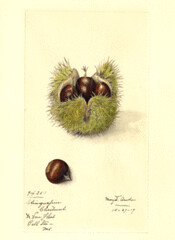
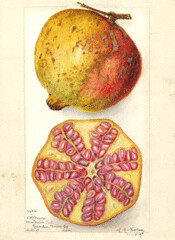

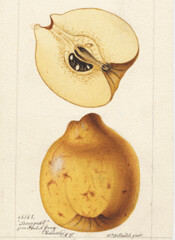




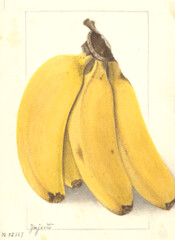

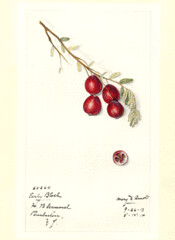
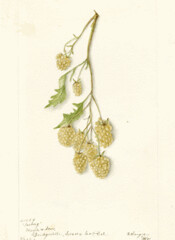
4 Comments:
Is the Chinese lemon the same thing as a Meyer lemon?
I don't think so. If I recall, the Meyer lemon is a believed to be a cross between a standard lemon and an orange of some type, but I could be wrong. Taxonomists designate it Citrus x meyeri.
The 'Rangpur' lime is actually a Chinese lemon, if you're familiar with that (even if you're not, really.)
Congratulations (and thanks) for being the first serious commenter on this blog, by the way.
I tasted a Rangpur lime for the first time just the other day! It was a wild burst of crazy lime flavor.
I was at the Santa Monica Farmer's Market (California) with Chef Tim Love and this seller offered us a taste. He said "They are great - you can eat the peel and all."
We bit in and both made a face - not really good eating. But Tim immediately said "These would make GREAT margaritas!"
I put a link to your blog on mine: http://snackish.blogspot.com
I noticed the link on your blog...thanks. I really enjoyed your site. I'm going to see if I can talk my wife into making that Georgian recipe.
I could definitely see Rangpur limes as margarita material. I really like limes a lot...there's quite a variety out there, too...they just take a little more creativity to use than, say, oranges, because you're not going to necessarily eat them straight.
Post a Comment
<< Home